Order: Suliformes (Before in Pelecaniformes) - Family: Phalacrocoracidae Status: Resident - Common. Habitat: Ponds and Río de la Plata
| All records since January 2014 |
|
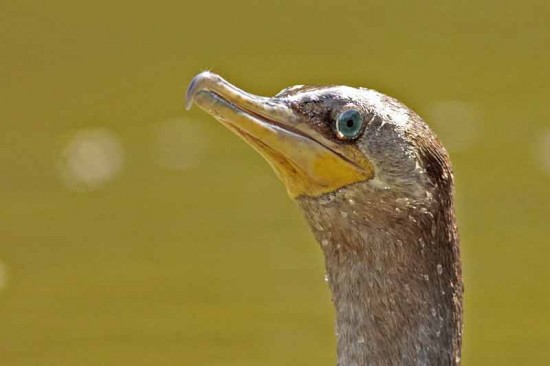 © J. Simón Tagtachian © J. Simón Tagtachian
The Neotropic Cormorant belongs in the family Phalacrocoracidae. Up to 2010 this family together with the families Phaethontidae, Fregatidae, Pelecanidae, Anhingidae and Sulidae were included within the Order Pelecaniformes. One morphological characteristic bonded them all. All of them and only they have the four toes palmated. There are other families with palmated toes such as ducks, but they have only three out of the four toes palmated, remaining one of them free.
However, genetic studies have shown that they are not so close as they were believed to be and these families have been rearranged as follows. The Phaetontidae (tropical brids not found in Argentina) were isolated in the Order Phaethontiformes. The Pelecanidae (pelicans, neither in Argentina) remained in the Pelecaniformes and the four remaining ones Fregatidae (fregatebird), Sulidae (boobies), Anhingidae (anhinga) and Phalacrocoracidae (cormorant), have been placed into a new order named Suliformes. These four families are represented in Argentina and but for boobies we have records of the other three in Costanera. CR |
| Adult |
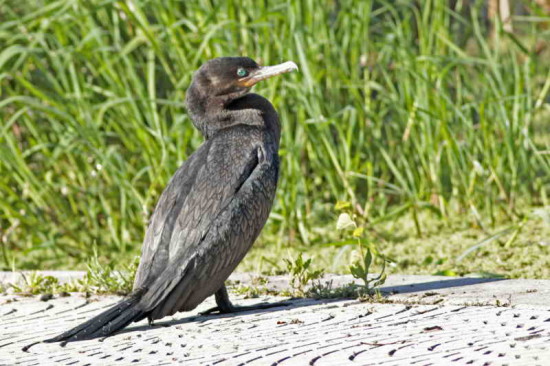 © J. Simón Tagtachian © J. Simón Tagtachian
Blackish.
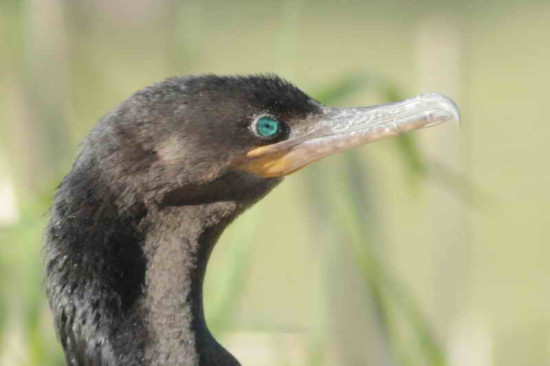 © J. Simón Tagtachian © J. Simón Tagtachian
Turquoise iris
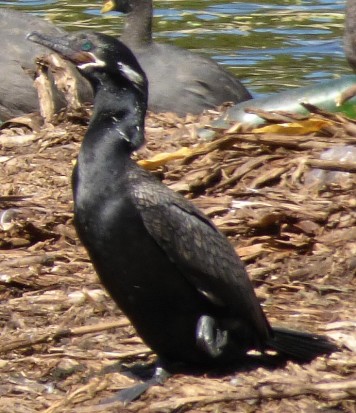 © Dolores Fernández © Dolores Fernández
In alternate plumage: white line bordering bill base. White ear tuft
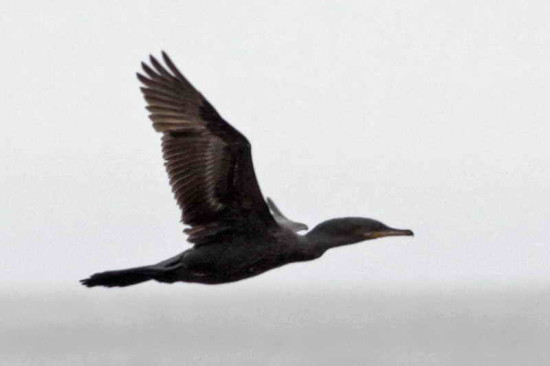 © J. Simón Tagtachian © J. Simón Tagtachian
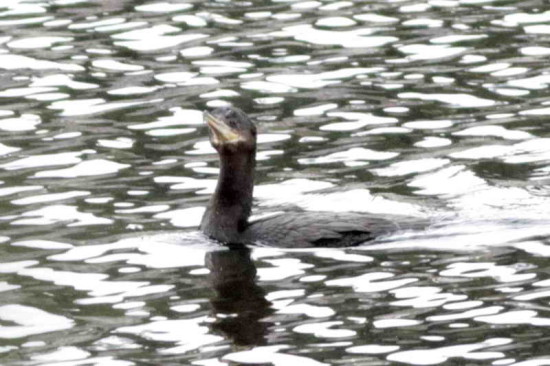 © J. Simón Tagtachian © J. Simón Tagtachian
It swims with body partially submerged and head and neck above water. |
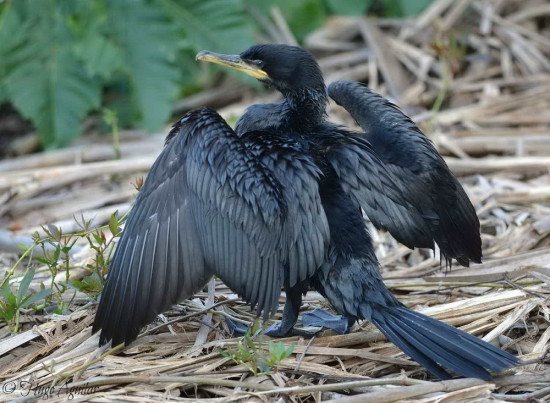 © Hugo Aguilar © Hugo Aguilar
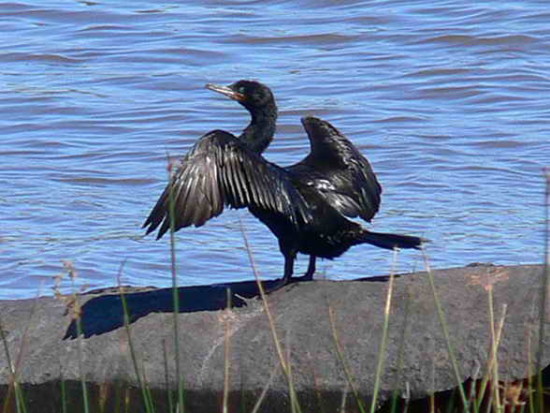
© Sergio Cusano
This typical posture - wings outstretched - has been attributed different functions. They do so for thermoregulation, for balancing the body, to digest or to indicate there is fish. Today it is common knowledge they dry their feathers not only by the sun's effects but also by the wind's. |
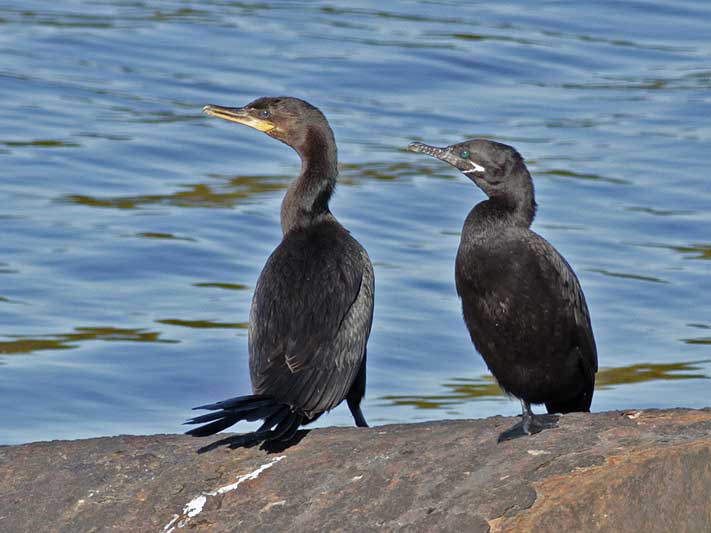
Right an individual in breeding plumage. white line bordering bill base. Turquoise iris. White ear tuft is not visible.
Left (non-breeding plumage): lacks white line. Duller green colour of iris. Brownish bill.
5-2013 © J. Simón Tagtachian |